Autostereoscopic 3D
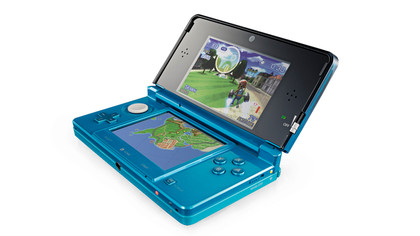
What is it?
3D, but without the glasses. Autostereoscopic 3D uses a range of technologies to present each eye with a different image to convince your brain that the image you're looking at has depth.
Why is it important?
3D isn't for everyone, and when you have to put a pair of glasses in front of your eyes, it has a limited lifespan. Several technologies are vying to make glasses-free 3D a reality.
How does it work?
We could point a finger at Avatar for the resurfacing fad of 3D in cinemas, but it has had some advantages, like rock-solid 120Hz screens. Maybe autostereoscopic tech will produce some other lasting benefits after the 3D trend wanes.
Sign up for breaking news, reviews, opinion, top tech deals, and more.
Of the different autostereoscopic technologies we've seen, parallax barrier has the most traction, and can be found in the likes of the Nintendo 3DS and LG Optimus 3D. It uses an array of slits in front of the display that mean that each eye views a different set of pixels - a systems that works reasonably well with handheld devices, but is a little less convincing on larger displays like TVs.
Another option is a lenticular display, which works in a similar way to lenticular printing. The limitations are similar to parallax barrier though, in that it works better on devices you can hold.
Volumetric displays are a different idea completely, and Sony showed off such an idea with its RayModeler at Siggraph 2010. This was impressive, but the tech is difficult to implement.
Project Glass
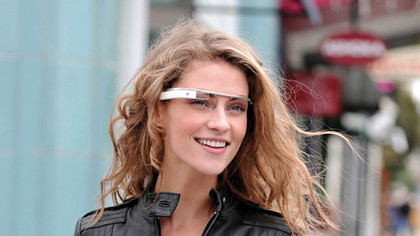
What is it?
Project Glass is an attempt by Google to develop a head-mounted display that "helps you share your life as you're living it".
Why is it important?
The fact that this is being developed by Google is reason enough to sit up and pay attention, and the concept has the potential to change the way we interact with social media sites. The prototype glasses are much smaller than previous attempts at this sort of tech.
How does it work?
The project is built around a pair of glasses that offer an integrated heads-up display, with the battery hidden inside the frame. The glasses that Google is aiming to create are relatively small, with a single screen above the right eye alongside a front-facing camera. They will connect directly to the cloud, so you won't have to tether them to your mobile phone, although doing so does make sense as well.
The glasses will be location-aware, with an integrated GPS module, and interacting with the interface will be possible by tilting your head and issuing voice commands.
Project Glass is a bold project that would have been considered fanciful if it wasn't coming out of Google Labs. Early indicators suggest that it will be released to the public some time in 2014.
Tactus Technology

Website: www.tactustechnology.com
What is it?
As the blurb for Tactus says, "Why settle for flat?" Tactus is a technology that sits over your mobile phone's screen to offer a tactile interface for your button-pushing or keyboard input.
Why is it important
Whether you're using a mobile phone or a tablet, the chances are you've experienced the frustration of using an on-screen keyboard, and made plenty of mistakes doing so. Tactus will make those button pushes much more responsive.
How does it work?
Tactus Technology is a thin membrane that sits on top of your screen and can make areas bulge depending on what is shown there. Tactus provides somewhere to naturally rest your fingers and offers a certain degree of resistance to presses.
The company behind the technology claims that adding this screen will improve the precision of presses and reduce the chance of mis-clicks.
The technology isn't limited to a standard layout. If, for instance, you were playing a game and wanted a direction pad under your thumb, then your screen could offer that kind of feedback. When they're not needed, these buttons recede into the display again.
Tactus claims that the membrane at the heart of its technology is the same thickness as the glass used on existing devices, so shouldn't add anything to the manufacturing designs. It's still early days for the technology, but it could potentially change the way we use everything from mobile phones to televisions.
IBM 5 in 5: Security
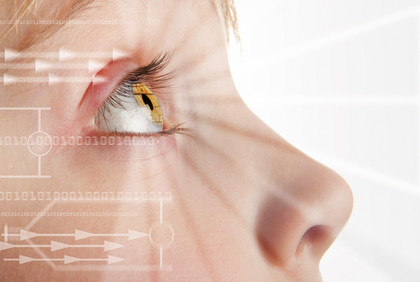
What is it?
An internal IBM think tank that predicts future challenges and imagines how technology will be able to solve them. Its latest and most compelling invention is biological security.
Why is it important?
Today we lock our devices with passwords, but these are fundamentally insecure - the more passwords we need to remember, the more we reuse them and the weaker they become. This project solves that problem by using data about your body as a password.
How does it work?
IBM says: "Your biological make-up is the eye to your individual identity, and soon it will become the key to safeguarding it." In the company's view of the future, retinal scans and voice fingerprints will be combined in software to create what the company is billing as "a DNA unique online password".
Biometrics are nothing new, but IBM's system combines factors for more security. It calls this amalgam 'multi-factor biometrics'. If it gets its way, you'll speak to an ATM to withdraw cash or ask your phone to unlock. The devices would match that input with data held in the cloud, but this raises privacy worries.
According to IBM: "To be trusted, such systems should enable you to opt in or out of whatever information you choose to provide."
New RAM chips for smartphones
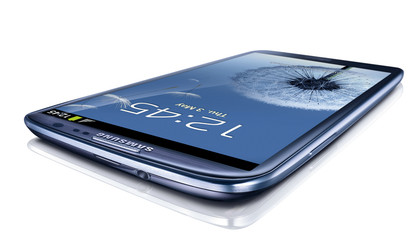
Website: www.samsung.com
What is it?
Samsung has increased the amount of RAM in smartphones to 2GB while using a 20-nanometer process to create tiny chips that don't drain the phone's battery.
Why is it important?
Mobile processors have become considerably more powerful in the past few years, but they're nothing without solid and capacious memory. Samsung's new chips promise to increase the speed of mobiles even more, and move them closer to desktop PCs.
How does it work?
A couple of years ago, despite having a 32GB SD card installed, your Android smartphone would frequently report that it was out of memory. 512MB of internal RAM has been replaced with the de facto 1GB recently, but it's still not quite enough.
2GB is plenty though, and Samsung has used a 20-nanometer process to create the chips, so they're a fifth slimmer than current ones, which also means that devices themselves can be nice and skinny. They use a lot less power, and more memory means devices are snappier, slicker and able to run more programs at once.
Samsung doesn't just make chips for its own phones - it produces them for all major mobile manufacturers, including its arch-rival Apple. The 2GB chips are now in mass production, and are set to debut in phones later this year.
Market research firm IHS iSuppli believes the chips will dominate the market towards the end of 2013.
Behavio
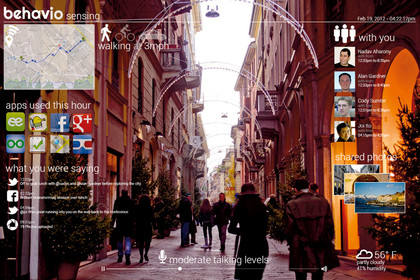
Website: www.behav.io
What is it?
An open-source project that collects data from your smartphone, like your location, altitude and even behaviour. Behavio uses as many sources as possible to build models and predictions.
Why is it important?
The ways in which people move and behave can tell us a lot about what's going on in the world, even to the extent that it can show disaster areas or outbreaks of communicable diseases.
How does it work?
It may sound like an invasion of privacy, but the team is being as transparent as possible in the way data is used and stored. As an open-source project, everyone has complete access to everything gathered, and personal information like phone numbers are encrypted as a string of random numbers that are unintelligible to humans but easy for computers to search for.
Behavio takes this data and turns it into something useful in the real world. For example, it can predict when you're about to send a text message, and even tell you what time of year you're most likely to start a new exercise regime.
On a bigger scale, it will be able to monitor users' movements to predict illness, and pinpoint outbreaks of, say, influenza.
Willow Glass
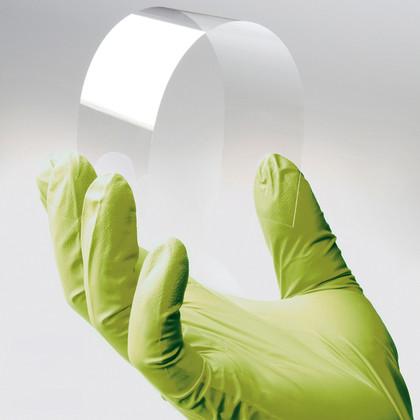
Website: www.corning.com
What is it?
Willow Glass is an ultra-flexible, tough and astonishingly thin screen that can be wrapped around devices or structures.
Why is it important?
Flexible, paper-like screens are often predicted, but never see the light of day. If one company has the nous to see it through, it's Corning, which has made a name for itself with its toughened Gorilla Glass for smartphones.
How does it work?
Ever since the term 'electronic ink' was coined, electronic paper has been at the forefront of tech boffins' imaginations. In theory, it's a screen that can be flexed and bent as if it were paper, while retaining the ability to display information. It's very hard to get right, but Corning seems to have finally nailed it.
Willow Glass is just 100 microns thick - about the same as a sheet of copy paper - and is able to support both organic light emitting diodes and liquid crystal displays. Corning has also revolutionised the production process, using rollers to 'print' off reels of the glass. The potential is astounding.
Not only could it be used in smartphones that could be rolled up and slipped in a pocket, the company also thinks it could be used in solar cells and lighting.
Corning has yet to demonstrate Willow Glass as anything other than a flexible sheet, and it may lose its transparency once an LED or LCD display is installed. Nevertheless, Corning has already shipped samples to customers developing display and touch applications.
Twisted light
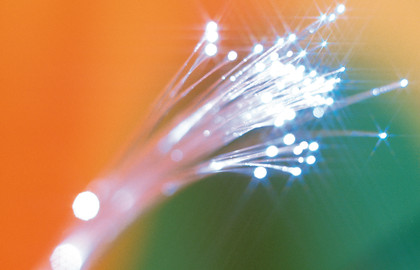
Website: www.usc.edu
What is it?
A method for transferring huge amounts of data via the manipulation of the orbital angular momentum of light waves.
Why is it important?
Enormous amounts of data are transferred around the planet every day, but large files take an age to upload and download. Speeding up the process could change the fundamental infrastructure of the internet.
How does it work?
Fibre-optics are currently the fastest way to send data around the world, but an international team led by the University of Southern California has found a way to pack even more data into the process by manipulating the light beams themselves.
The technique relies on light's unique properties, and the ability to put a 'spin' on its photons. As with conventional fibre optic data transmission, the spin is encoded at one end and decoded at the other, but the amount of spin dictates another layer of binary code. The researchers were able to include eight such beams in their tests, yielding speeds of 2.5 terabits of data per second - the equivalent of 66 DVDs.
While the team was only able to broadcast data for one metre, it believes it will be able to upscale the tech over long-range fibre-optic cables.
Google Knowledge Graph
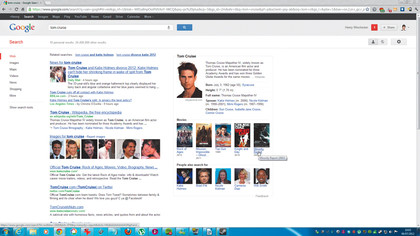
Website: www.google.com
What is it?
Google is hoping to give more relevant search results, with its servers understanding certain combinations of words and able to differentiate between things that have the same name.
Why is it important?
Search is the bread and butter of the internet, but still gives us reams of irrelevant results when we enter terms. Knowledge Graph aims to take us to relevant information faster.
How does it work?
The problem with Google's search at the moment is that it can't get its head around the fact that different things may have the same name. Type 'Taj Mahal' for instance, and you'll get a host of links to the grand mausoleum in India, the American blues musician, and a hotel and casino in Atlantic City. With Knowledge Graph these results are categorised, and a single click will switch to results only relevant to the musician.
"Your results are more relevant because we understand these entities and the nuances in their meaning the way you do", says Amit Singhal, Google's senior vice president of engineering.
Knowledge Graph isn't just about displaying relevant results - it also gives Wikipedia-like information on certain subjects to the right of the results. Search for Brad Pitt, for example, and you'll find his date of birth, a list of films he's been in and more.
It may seem like a minor addition, but Google has essentially - and revolutionarily - removed the need to click on results to find relevant information.
4K resolution
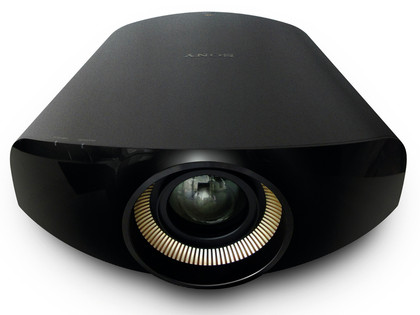
What is it?
4K is the next step up from the 1080p resolution. There's a surprising number of standards fighting for dominance, but they're all roughly four times the resolution of the current HD specification.
Why is it important?
For smaller displays you could argue that we don't need to go beyond 1080p (though you only need look at the Retina display of the iPhone 4S for the counter argument), but for projectors and TVs, 4K can produce a much more detailed image.
How does it work?
Sony isn't alone in the super-high-resolution market, but few other manufacturers are currently pushing professional 4K projection alongside home cinema systems. Sony's VPL-VW1000ES boasts the kind of specifications that make its £16,799 price tag seem almost reasonable.
The main attraction is the resolution - at 4,096 x 2,160, the final picture is made up of 8.8 million pixels. You can sit closer to the screen without seeing pixelation, too.
There is a small problem for 4K at the moment though - there isn't much content that really shows off your investment. This is one of the reason Sony is so keen to stress the quality of its upscaling engine, which takes your 1080p Blu-ray content and interpolates the pixels up to the higher resolution.
Of course you can't beat content filmed at this higher resolution, and YouTube hosts a surprising number of 4K videos. The trailer for The Hobbit is available in 4K, although the film itself was filmed at an even higher resolution.
Natural Interaction
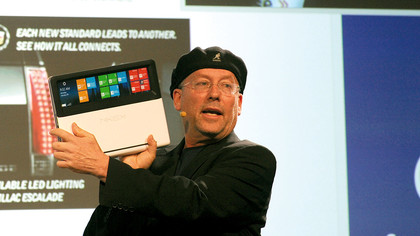
Website: www.intel.com
What is it?
Touch and voice recognition are a key part of smartphones, so why not bring them to PCs? Intel's Ultrabooks promise to do just that.
Why is it important?
This may not be a quantum shift in computing, but it could certainly change the way we use the web, and turn laptops into more versatile, tablet-style computers. It also means PCs can be made more secure, and can even monitor their users' health remotely.
How does it work?
The type of voice interaction demonstrated in Apple's Siri interface has been around for a while, but on PCs it's remained fragmented: Chrome has a little voice interaction, but it's still very much on the drawing board.
The new Ultrabooks will feature both. Intel's senior vice president Tom Kilroy demonstrated the new technology at Computex, using voice commands to open a new browser Window and post an update on Facebook. It's a shift for computers from being static objects to more fluid and organic products.
Where it gets really intriguing is in Intel's use of Ultrabooks to read biometric measurements and facial patterns to recognise users. This way, an Ultrabook will be able to sound an alarm if it's touched by a thief, and allow doctors to monitor a patient's health from afar.
Stretchable displays
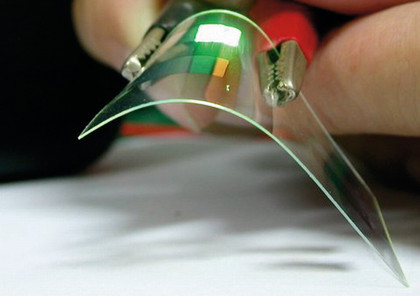
What is it?
It's still in the lab stage at this point, and under less than normal operating conditions, but scientists at UCLA have produced the first stretchable organic light-emitting diode (OLED).
Why is it important?
Flexible and bendable displays using a plastic framework may offer some kind of deformity, but a stretchable OLED has the potential for a far more interesting set of uses, and could eliminate the need for a fixed form factor.
How does it work?
While we're all used to working with the rigid devices we currently have available, the amount of research going into deformable electronics suggests that we're either much clumsier than any of us imagined, or that there are plenty of uses for technologies when they're freed from traditional restraints.
This latest breakthrough in a lab at UCLA has created an OLED that maintains its electronic properties, even when the material itself is stretched. This has the potential to rewrite the way certain devices are designed, and even where they can go; when you introduce a high level of deformation, more organic uses can be envisaged.
Initially it should allow us to ignore the traditional distinctions between 4:3 and 16:9 aspect ratios, and whether a device should be held in landscape or portrait mode.
Flexible displays
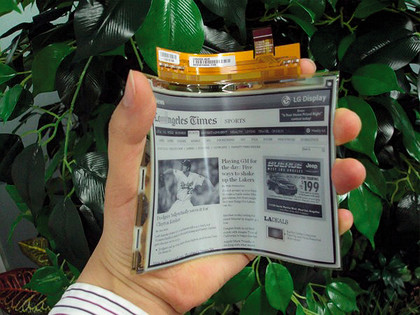
Website: www.lgdisplay.com
What is it?
This is a next-generation e-ink display for use in e-readers and newspapers. The technology uses a plastic substrate rather than glass for more flexible, less accident-prone devices.
Why is it important?
That sci-fi image of holding a newspaper on the tube with stories updating on the fly could finally be a reality.
How does it work?
For many of us, the concept of electronic ink and displays conjures up images of flexible newspaper-like devices. This is exactly what LG Display is promising with its first plastic electronic paper display (EPD), which it started mass producing in March.
The 6-inch plastic EPD is designed to be used in the existing ebook market and boasts a resolution of 1,024 x 768 pixels. This specification may not seem particularly revolutionary, but it's the word 'plastic' that holds so many possibilities.
As Sang Duck Yeo, head of operations for LG Display's mobile/OLED division, explains: "Based on our success in mass-producing plastic EPD, we are excited as we look toward applying concepts from this experience to developments like plastic OLED and flexible displays."
The plastic EPD allows the screen to be bent up to 40 degrees, is a third slimmer than a traditional glass screen, and is half the weight. The plastic EPD isn't as brittle as traditional screens either, with test devices withstanding a fall from 1.5m that would be fatal to more traditional e-reader with a glass screen.
- 1
- 2
Current page: Next-gen computing: defining the future
Prev Page Next-gen computing: defining the future